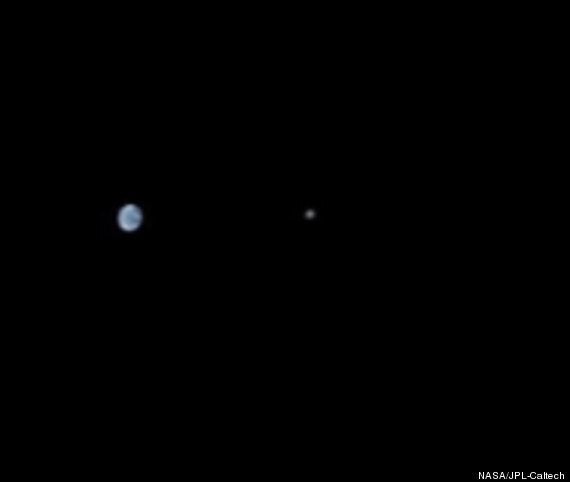Back in October , Nasa's Juno spacecraft became the fastest man-made object in history as it sling-shotted round the Earth on it's way to Jupiter.
During that speed-boosting manoeuvre, it recored this - the first-ever video of the Moon orbiting the Earth in a "cosmic pirouette".
"If Captain Kirk of the USS Enterprise said, ‘Take us home, Scotty,’ this is what the crew would see, " said Scott Bolton, Juno principal investigator at the Southwest Research Institute, San Antonio.

You're on there somewhere
"In the movie, you ride aboard Juno as it approaches Earth and then soars off into the blackness of space. No previous view of our world has ever captured the heavenly waltz of Earth and moon."
During the slingshot Juno reached the incredible speed of 87,000 mph and was spinning at 2rpm.
In order to create a video that wouldn't give viewers vertigo, a frame each time the camera was facing Earth at exactly the right instant had to be captured.
The frames were sent to Earth, where they were processed into video format.
The cameras that took the images for the movie are located near the pointed tip of one of the spacecraft's three solar-array arms.
They are part of Juno's Magnetic Field Investigation (MAG) and are normally used to determine the orientation of the magnetic sensors.
"Everything we humans are and everything we do is represented in that view," said the star tracker's designer, John Jørgensen of the Danish Technical University, near Copenhagen.
The Juno spacecraft was launched from Kennedy Space Center in Florida on August 5, 2011. Juno’s launch vehicle was capable of giving the spacecraft only enough energy to reach the asteroid belt, at which point the sun’s gravity pulled it back toward the inner solar system.
Mission planners designed the swing by Earth as a gravity assist to increase the spacecraft’s speed relative to the sun, so that it could reach Jupiter. (The spacecraft’s speed relative to Earth before and after the flyby is unchanged.)
After Juno arrives and enters into orbit around Jupiter in 2016, the spacecraft will circle the planet 33 times, from pole to pole, and use its collection of science instruments to probe beneath the gas giant's obscuring cloud cover.
Scientists will learn about Jupiter's origins, internal structure, atmosphere and magnetosphere.
Juno's name comes from Greek and Roman mythology.
The god Jupiter drew a veil of clouds around himself to hide his mischief from his wife, but the goddess Juno used her special powers to peer through the clouds and reveal Jupiter's true nature.